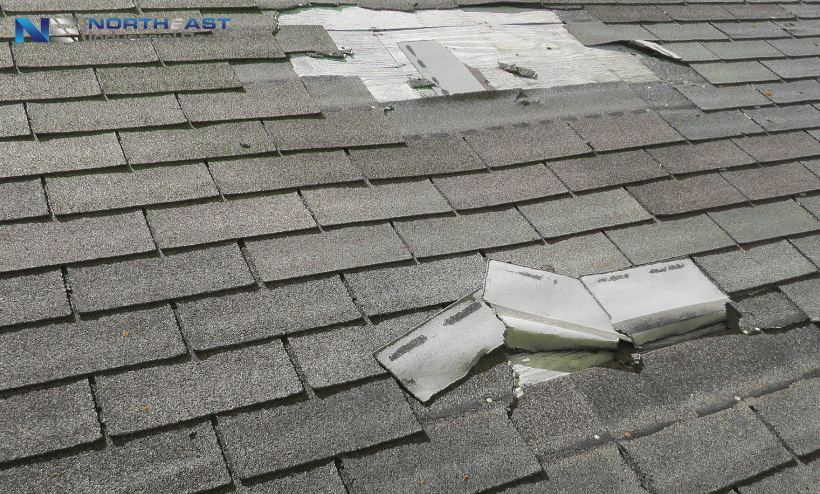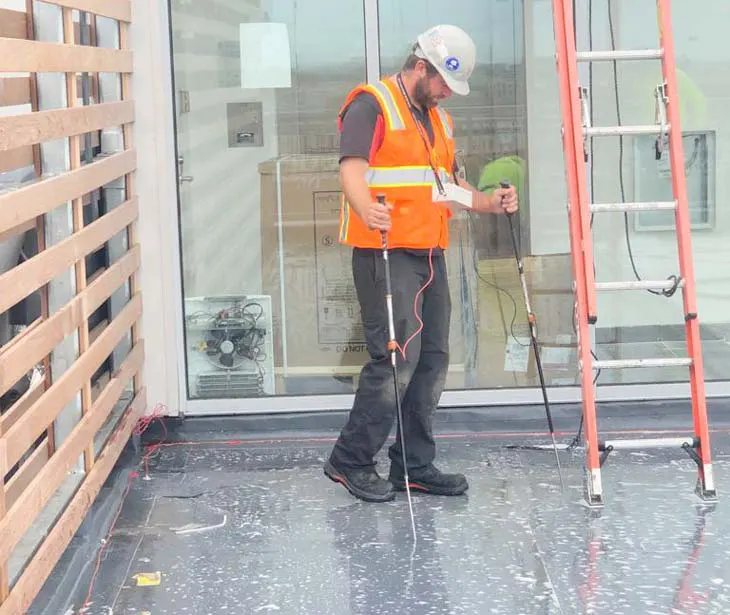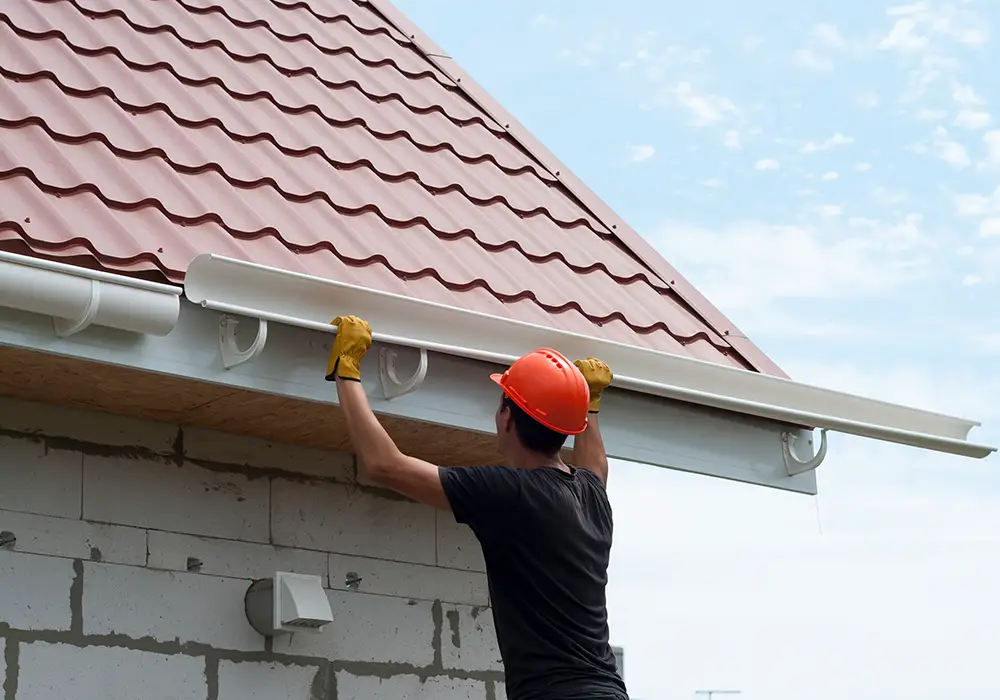In the world of roofing, there are two main categories: commercial and residential roofing. While both types serve the same purpose of protecting your property, they differ significantly in terms of design, materials, and installation process. This article will delve into the key differences between commercial and residential roofing, highlighting their unique features and requirements.
Differences between Commercial and Residential Roofing:
Materials Used for Commercial and Residential Roofing
Residential roofing materials are often chosen for their aesthetic appeal, ease of installation and affordability. Asphalt shingles are the most commonly used material for residential roofing due to their durability and cost-effectiveness. Metal roofing is also gaining popularity due to its durability and long lifespan. Clay tiles are often chosen for their classic look and energy efficiency.
In contrast, commercial roofing materials are chosen primarily for their durability and ability to withstand harsh weather conditions. PVC roofing is a popular choice for commercial roofs due to its durability, energy efficiency, and resistance to UV radiation. TPO roofing is another popular option that offers excellent heat reflection and energy efficiency. EPDM roofing is often used for flat roofs and is known for its durability and resistance to weathering. Modified bitumen roofing is a multi-layered system that provides excellent protection against weathering and is often used for flat or low-slope roofs.
Differences in Design and Style of Commercial and Residential Roofing
Commercial roofing typically has a flat or low-slope design, which allows for more space for rooftop equipment and easier installation of HVAC systems and solar panels. Additionally, commercial roofs are often larger in size than residential roofs, providing more flexibility in terms of design and shape. Flat roofs are the most common design used in commercial roofs because they are cost-effective, easy to install, and provide ample space for rooftop equipment. Low-slope roofs are also used in commercial buildings, especially for buildings with a larger footprint. Low-slope roofs are designed to allow water to flow towards drains and prevent ponding, which can lead to leaks. Commercial roofing design also includes various shapes, such as gabled, hipped, and mansard roofs, which are often used in buildings with more complex architecture, such as hotels or office buildings.
Residential roofing, on the other hand, is often chosen for its aesthetic appeal. Homeowners may choose a specific roofing design and material to match the style of their home and enhance its curb appeal. Residential roofs have steeper pitches than commercial roofs to help shed water and snow and are often designed to complement the style of the house. A variety of materials can be used for residential roofing, including asphalt shingles, metal, clay tiles, or natural slate. Residential roofing designs can include various shapes and styles, such as gable, hip, gambrel, or mansard roofs, which provide different aesthetic looks.
Overall, residential roofing design is often simpler and more focused on aesthetics than commercial roofs. Homeowners may choose a specific roofing design and material to match the style of their home and enhance its curb appeal, whereas commercial roofing design is primarily focused on function and practicality, with designs that prioritize easy installation and equipment access. While both types of roof have their unique design features, it is important to consult with a professional roofing contractor to ensure that the design meets the specific requirements of the property and provides adequate protection against the elements.
Roof Pitch
Roof pitch refers to the angle or slope of a roof. Residential roofing usually has a steeper pitch than commercial roofing. This is because residential roofs are designed to shed water and snow quickly, preventing any water damage. In contrast, commercial roofs have a low slope or are completely flat, which allows for easy installation of HVAC units or solar panels.
Load Capacity
Commercial roofing is designed to support heavier loads than residential roofing. This is because commercial roofs often have equipment or machinery installed on them, such as HVAC systems or solar panels. Residential roofs do not have to bear as much weight, as they are only designed to support the weight of the roofing material and people walking on them.
Cost Comparison between Commercial and Residential Roofing
Cost is a significant factor when it comes to choosing between commercial and residential roofing. Commercial roofing is generally more expensive than residential roofing due to several factors. Firstly, commercial roofing materials are often of higher quality and durability than residential roofing materials. These materials are designed to withstand harsh weather conditions and provide better insulation and energy efficiency. Secondly, commercial roofs are often larger in size than residential roofs, which means that more materials and labor are required for installation. The cost of labor is also typically higher for commercial roofing due to the specialized skills and equipment required for installation.
In contrast, residential roofing is typically less expensive than commercial roofing. This is because residential roofs are smaller in size and require fewer materials and less labor for installation. Additionally, residential roofing materials are often more affordable than commercial roofing materials, and homeowners have a wider variety of options to choose from. Asphalt shingles, for example, are a popular and cost-effective option for residential roofing.
When it comes to choosing between commercial and residential roofing, it’s important to consider the cost implications. While commercial roofing may be more expensive initially, it can provide long-term savings through its durability and energy efficiency. Residential roofing may be more affordable initially, but it may require more frequent repairs and replacement in the long run. Consulting with a professional roofing contractor can help you determine the best roofing option for your property, taking into account your budget and specific needs.
Roofing Installation
Commercial Roofing Installation
Commercial roofing installation requires specialized skills and equipment. The installation process is often more complex than residential roofing due to the larger size and more significant equipment. Commercial roofing installation also requires more safety measures due to the height of the building.
Residential Roofing Installation
Residential roofing installation is typically less complex than commercial roofing installation. It requires less equipment and is often completed in a shorter time frame.
Roofing Repair
Commercial Roofing Repair
Repairing commercial roofing requires specialized skills and equipment, similar to the installation process. It is important to hire a professional roofing contractor who has experience with commercial roofs. Commercial roofs are typically larger than residential roofs and have different materials, which may require unique repair techniques.
Residential Roofing Repair
Residential roofing repair is often more straightforward than commercial roofing repair. A homeowner can often handle minor repairs themselves with some basic tools and knowledge. However, it is important to hire a professional roofing contractor for more significant repairs or when dealing with complex roofing systems.
Commercial and residential roofs differ significantly in terms of materials, design, installation process, and repair. Understanding these differences can help you choose the right roofing system for your property and ensure that it is properly installed and maintained. Whether you are a homeowner or a business owner, it is important to work with a professional roofing contractor who has experience with your type of roof to ensure that it lasts for years to come.






